Related Research Articles
The history of Trinidad and Tobago begins with the settlements of the islands by Indigenous First Peoples. Trinidad was visited by Christopher Columbus on his third voyage in 1498,,and claimed in the name of Spain. Trinidad was administered by Spanish hands until 1797,but it was largely settled by French colonists. Tobago changed hands between the British,French,Dutch,and Courlanders,but eventually ended up in British hands following the second Treaty of Paris (1814). In 1889,the two islands were incorporated into a single political entity. Trinidad and Tobago obtained its independence from the British Empire in 1962 and became a republic in 1976.

During the Age of Discovery,a large scale colonization of the Americas,involving a number of European countries,took place primarily between the late 15th century and the early 19th century. The Norse explored and colonized areas of Europe and the North Atlantic,colonizing Greenland and creating a short term settlement near the northern tip of Newfoundland circa 1000 AD. However,due to its long duration and importance,the later colonization by the European powers involving the continents of North America and South America is more well-known.

German attempts at the colonization of the Americas consisted of German Venezuela,St. Thomas and Crab Island in the 16th and 17th centuries.

The Duchy of Courland and Semigallia was a duchy in the Baltic region,then known as Livonia,that existed from 1561 to 1569 as a nominally vassal state of the Grand Duchy of Lithuania and subsequently made part of the Crown of the Polish Kingdom from 1569 to 1726 and incorporated into the Polish–Lithuanian Commonwealth in 1726. On March 28,1795,it was annexed by the Russian Empire in the Third Partition of Poland.

The Curonian colonization of the Americas was performed by the Duchy of Courland and Semigallia,which was the second-smallest state to colonise the Americas,after the Knights of Malta. It had a colony on the island of Tobago from 1654 to 1659 and intermittently from 1660 to 1689.

Jufureh is a town in the Gambia,30 kilometers inland on the north bank of the River Gambia in the North Bank Division near Kunta Kinteh Island. The town is home to a museum and Fort Jillifree.
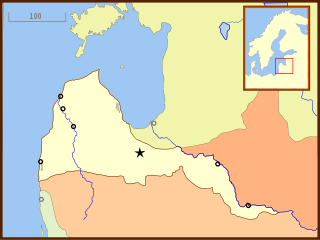
Curonian colonisation refers to the colonisation efforts of the Duchy of Courland and Semigallia,a vassal duchy of the Polish–Lithuanian Commonwealth. Small,but wealthy,the Duchy took a modest part in the European colonization settlement attempts of West Africa and the Caribbean.

Piltene is a town in northwestern Latvia. The population in 2020 was 909.

A colonial empire is a collective of territories,either contiguous with the imperial center or located overseas,settled by the population of a certain state and governed by that state.

Jacob Kettler was Duke of Courland and Semigallia from 1642 to 1682. Under his rule,Courland and Semigallia became more independent of its Polish suzerain,reached its peak in wealth,and even engaged in its own overseas colonization,making it one of the smallest,but fastest growing states in the world at that time.

The Bishopric of Courland was the second smallest (4500 km2) ecclesiastical state in the Livonian Confederation founded in the aftermath of the Livonian Crusade. During the Livonian War in 1559 the bishopric became a possession of Denmark,and in 1585 sold by Denmark to Poland–Lithuania.
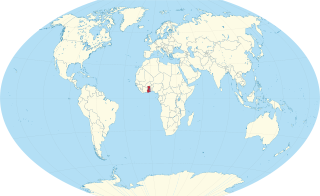
The Gold Coast was the name for a region on the Gulf of Guinea in West Africa that was rich in gold,petroleum,sweet crude oil and natural gas. This former region is now known as the country Ghana.

Crown Point is a town in southwestern Tobago,Trinidad and Tobago. It contains the A.N.R. Robinson International Airport which was formerly known as the Crown Point International Airport. It is near Store Bay,Buccoo Reef,and Pigeon Point. Crusoe Cave is located nearby.

Bilateral relations between the countries of France and Trinidad and Tobago have existed for about two hundred years. Currently,France has an embassy in Port of Spain. Trinidad and Tobago is represented in France through its embassy in Brussels (Belgium). Trinidad and Tobago also has bilateral investment agreements with France.

Adrian Lampsins,sometimes called Adrien Lampsius,(1598-1673) was the Baron of colonial Tobago,alongside his brother,Cornelius Lampsins.
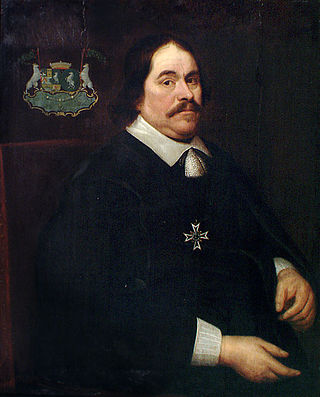
Cornelius Lampsins,was,along with his brother Adrian,the Baron of Tobago from 1662 to 1664.
Hubert de Beveren was the Dutch Governor of Tobago from 1662 to 1666. He was appointed by the brothers Lampsins once they became the Barons of Tobago,as granted by Louis XIV.

The history of Tobago covers a period from the earliest human settlements on the island of Tobago in the Archaic period,through its current status as a part of the Republic of Trinidad and Tobago. Originally settled by indigenous people,the island was subject to Spanish slave raids in the sixteenth and early seventeenth century and colonisation attempts by the Dutch,British,French,and Courlanders beginning in 1628,though most colonies failed due to indigenous resistance. After 1763 Tobago was converted to a plantation economy by British settlers and enslaved Africans.
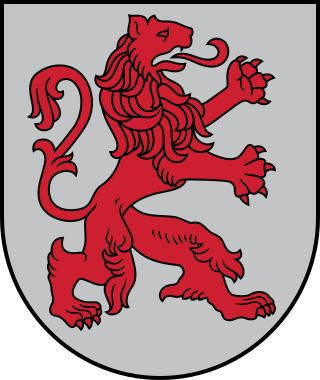
The coat of arms of Courland (Kurzeme),a historical region in western Latvia,has been known since the 16th century and depicts a lion gules on a silver background.
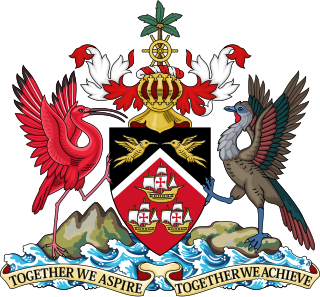
Trinidadian and Tobagonian nationality law is regulated by the Trinidad and Tobago Constitution Order of 1962,as amended;the 1976 Citizenship Act,and its revisions;and various British Nationality laws. These laws determine who is,or is eligible to be,a national of Trinidad and Tobago. Trinidadian and Tobagonian nationality is typically obtained either on the principle of jus soli,i.e. by birth in Trinidad and Tobago or under the rules of jus sanguinis,i.e. by birth abroad to parents with Trinidadian and Tobagonian nationality. It can be granted to persons with an affiliation to the country,or to a permanent resident who has lived in the country for a given period of time through naturalisation. There is not currently a program in Trinidad and Tobago for persons to acquire nationality through investment in the country. Nationality establishes one's international identity as a member of a sovereign nation. Though it is not synonymous with citizenship,for rights granted under domestic law for domestic purposes,the United Kingdom,and thus the commonwealth,have traditionally used the words interchangeably.
References
- ↑ Nimblett, Lennie M. “The Courlanders Claim.” Tobago: the Union with Trinidad 1889- 1899: Myth and Reality, Authorhouse, 2012, pp. 311–311.